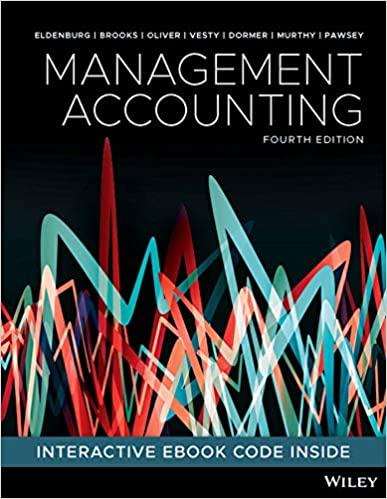Initially Techtra bid for any type of electronic assembly work that became available (mostly subcontract work from
Question:
Initially Techtra bid for any type of electronic assembly work that became available (mostly subcontract work from other entities experiencing temporary capacity problems). But over the years the entity narrowed its focus. It now produces essentially three products, although minor variations within each product line yield a large number of different models.
Each of the products goes through three separate operating departments: assembly, soldering and testing. When an order is received, it goes to production scheduling. Production scheduling personnel schedule time in each of the three departments. The availability of parts usually determines when a job can be started in the assembly department. If parts are not in stock, they are usually received from suppliers within a week. On the appropriate day, the computerised scheduling program places the job on the assembly department’s job list. Simultaneously, an electronic materials requisition goes to the stores department. Materials handling people then deliver the parts to the assembly department.
The assembly operation is semiautomatic.
When the department is ready to begin a new job, a worker inserts the appropriate guides into the equipment and adjusts the various settings. Parts are then loaded into the machines, which do the actual assembly. Because a worker keeps several machines running simultaneously, each order is processed using several (sometimes all) of the machines available in the department. Once the units for an order are assembled, an assembly department worker enters its completion in the computerised production system. The system then adds the job to the soldering department’s job list.
Materials handling personnel load assembled product onto racks and take them to the soldering department. Soldering processes the jobs on a first-in, first-out basis unless production scheduling asks for priority treatment for a particular job. For each job, the soldering machines must be set up for the appropriate product, but thereafter the operation is totally automatic. Once a job is completed, an entry is made in the production system, which adds it to the testing department’s job list. The products are then reloaded onto racks and transported to the testing department.
By the time the products get to the testing department, many of the jobs are near or past their promised delivery date. Thus, the production scheduling system directs the testing department to work on jobs in the order of promised delivery date. Normally the entity expects 3 per cent to 5 per cent of the products to be defective, and plans its lot size for each order accordingly. However, from time to time, an entire order must be scrapped due to faulty assembly or soldering on every unit. When an order is scrapped, it is noted in the production system and a rush replacement order is sent to the assembly department. Completed jobs that pass testing are immediately shipped to customers.
Workers in the assembly, soldering and testing departments each enter information in the production system detailing the amount of time spent working on specific jobs. This information, plus the materials requisitions, is used by the cost accounting system to track the cost of each job. The cost accounting system allocates departmental overhead to each job using overhead allocation rates based on budgeted overhead costs and budgeted hours for each department. General factory overhead — which includes production scheduling, materials handling, property taxes and so on is charged to each job based on total materials costs. Within each of the three product types, the average cost per unit varies primarily with the size of each job order because of set-up costs. The cost data are used to update the entity’s pricing sheets and to determine the efficiency with which each order was produced.
The managers are considering a change in the organisation of the plant. They propose that the plant floor, instead of being arranged in functional departments, could consist of manufacturing ‘cells’ for each product; that is, they would establish clusters of assembly machines, soldering machines and test equipment. Each cluster would be dedicated to making only one type of product. Under this arrangement, when an order is processed, individual units would proceed one by one through the assembly, soldering and test equipment in the appropriate cell. Most jobs would be completed within a day, but large jobs would sometimes take up to a week. The managers are also considering a change in the way parts are ordered from suppliers. The entity would place orders for each job, requesting delivery of parts on the day production is scheduled to begin.
Required
(a) Describe how the proposed changes would likely affect each of the following.
(i) Size of work in process and raw materials inventories
(ii) Material handling and machine set-up costs
(iii) Cost of defective units
(iv) Ratio of units produced to units ordered
(v) Production scheduling costs and machine utilisation rates
(vi) Average cost per unit of product
(vii) Ability to fulfil a customer’s rush order
(b) Assuming the managers adopt the proposed manufacturing changes, answer the following.
(i) What would be the advantages of adopting a process costing system?
(ii) The entity would no longer carry significant inventories. How would this change affect the cost accounting?
Step by Step Answer:

Management Accounting
ISBN: 9780730369387
4th Edition
Authors: Leslie G. Eldenburg, Albie Brooks, Judy Oliver, Gillian Vesty, Rodney Dormer, Vijaya Murthy, Nick Pawsey





